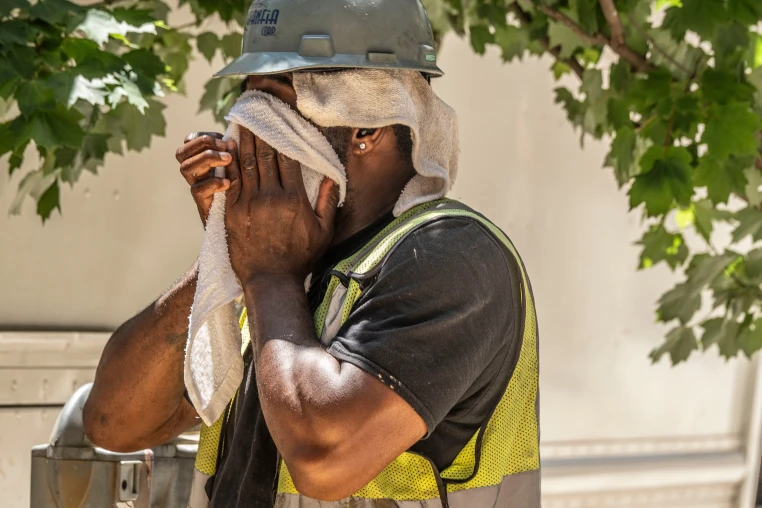Heat Waves Emerge as the World’s Deadliest Extreme Weather Threat
By Lisa F. Keith

Heatwaves are now recognized as the deadliest form of extreme weather worldwide, surpassing floods, storms, and tornadoes in annual mortality. Despite common public perception that disasters like floods or hurricanes pose the greatest risk, recent analyses show that prolonged periods of extreme heat and humidity lead to more fatalities each year. Multiple reports and climatologists emphasize that heat‑related deaths—from cardiovascular collapse, respiratory stress, and dehydration—occur gradually but cumulatively outnumber casualties from abrupt events such as floods or tornadoes.In the United States alone, heat consistently leads weather‑related deaths. Nationally, more fatalities are attributed to heat than to floods, winter storms, or hurricanes. In 2023, for instance, heat was responsible for a majority of nearly 900 weather‑related deaths, with wildfires and tornadoes following—underscoring heat’s persistent lethality :. Globally, heat was among the top contributors to deadly events in 2024, where intense droughts, storms, floods, and heatwaves claimed at least 11,500 lives worldwide, with heatwaves making a disproportionately large share of those fatalities :.Studies show that in the contemporary era, some of the world’s deadliest weather disasters have involved heat. The 2003 European heatwave alone caused approximately 72,000 deaths, while the 2010 Russian heatwave claimed another 56,000 lives—both far exceeding the death tolls of many large cyclones or floods. In aggregate, the decade of the 2000s saw heatwaves account for multiple of the worst single-event death toll records globally :.Heat’s deceptive danger lies in its slow‑onset nature. Victims—often elderly, chronically ill, or socially isolated—can die over days or weeks, in conditions that often go under‑reported. These deaths frequently evade media attention compared to dramatic, high-impact events like floods or hurricanes, contributing to a public underestimation of heat’s risks. Researchers describe this as a “reverse empathy gap,” where individuals acknowledge climate threats in abstract but underestimate local exposure, making floods seem more worrying than heat, despite data confirming the opposite :.Recent developments substantiate this misperception. A deadly flood struck Texas Hill Country on July 4, 2025, claiming 135 lives in a single flash flood event. While tragic and sudden, the U.S. saw more fatalities from heat across the summer period compared to flash floods, reinforcing heat’s broader toll. Texas lawmakers are now investigating flood response failures, yet experts caution that extreme heat over time likely caused even more uncounted deaths :.The science of attribution confirms that global warming magnifies heatwave frequency and severity. A 2024 report found that human-caused climate change added an average of 41 'dangerous heat days' globally, contributing significantly to mortality and illness. These extreme heat days are found to be responsible for thousands of premature deaths annually, with poor and vulnerable populations most at risk :.Climate scholars warn that among the ten deadliest extreme weather events worldwide since 2005—even including Cyclone Idai and the 1970 Bhola Cyclone—heatwaves have claimed the highest total death toll. Bloomberg reports that the ten events collectively caused over 570,000 deaths—and many of those were heat events worsened by warming temperatures :. In fact, in human terms, the slow-burning impact of heatwaves rivals or exceeds that of mega-storms.Yet public policy and disaster preparedness remain largely focused on sudden-onset events. Flood defense, levees, storm shelters, and evacuation plans are the priority, while systems to prevent heat-related mortality—such as cooling centers, heat early-warning systems, and urban planning to reduce heat islands—receive less attention. Experts argue this reflects planning inertia and the dramatic appeal of acute disasters, despite heat’s larger death toll :.Worldwide economic losses from natural disasters surged in 2024, reaching over $320 billion, yet most such cost assessments underplay the impact of heat because heat-related mortality rarely triggers large insurance payouts or infrastructure damage metrics :. Meanwhile, tools tracking weather‑related deaths often aggregate heat with other causes, obscuring the scale of its impact to policymakers.Adaptation policy is slowly evolving. European nations and parts of the U.S. have begun updating heatwave preparedness—issuing public messaging and targeted outreach. Vermont, for example, overhauled its flood management laws after repeated flooding—but experts say similar legislative attention is needed for heat risk. Climate researchers caution that even wealthy, technologically advanced regions remain vulnerable unless heat becomes a central priority of emergency planning :.Heat’s risk extends beyond fatalities. Hospital admissions for cardiac events, respiratory distress, and kidney failure spike during extreme heat days—especially among the elderly and outdoor laborers. Public health studies show a mortality multiplier beyond what is recorded: deaths attributed to heat tend to rise within weeks after heatwaves, reflecting an extended burden on health systems. The cumulative impact means that even modest temperature rises can have outsized health consequences.In contrast, events like South Korea’s monsoon floods recently made headlines for killing 17 people in a single event. Countries prepared for monsoons can limit losses, but the aggregate death toll of heat over a season typically surpasses such disasters. That single monsoon event, though tragic, underscores greater risk from sustained heat exposure over weeks rather than flashes of rain :.Researchers call for a paradigm shift: to ‘believe in the heat’ the same way we believe floods or hurricanes. That means implementing heat early warning systems, mandating rest breaks and hydration for outdoor workers, subsidizing cooling access for vulnerable populations, and redesigning cities to reduce heat retention. These measures require political will as much as technical insight, and must account for the silent burden that heat exerts on public health :.In summary, the deadliest form of extreme weather today is not hurricanes or floods but heat. Driven by climate change, deadly heat waves strike slowly but further, cumulatively claiming more lives than sensational storms. Yet societal awareness remains skewed—focused on the sudden when the real threat builds quietly over days and weeks. Recognizing and addressing heat’s lethality is critical for saving lives in a warming world.As policymakers and communities grapple with climate’s escalating risks, reframing public and institutional attention toward heatwave resilience may prove the most urgent challenge—and the most life-saving.